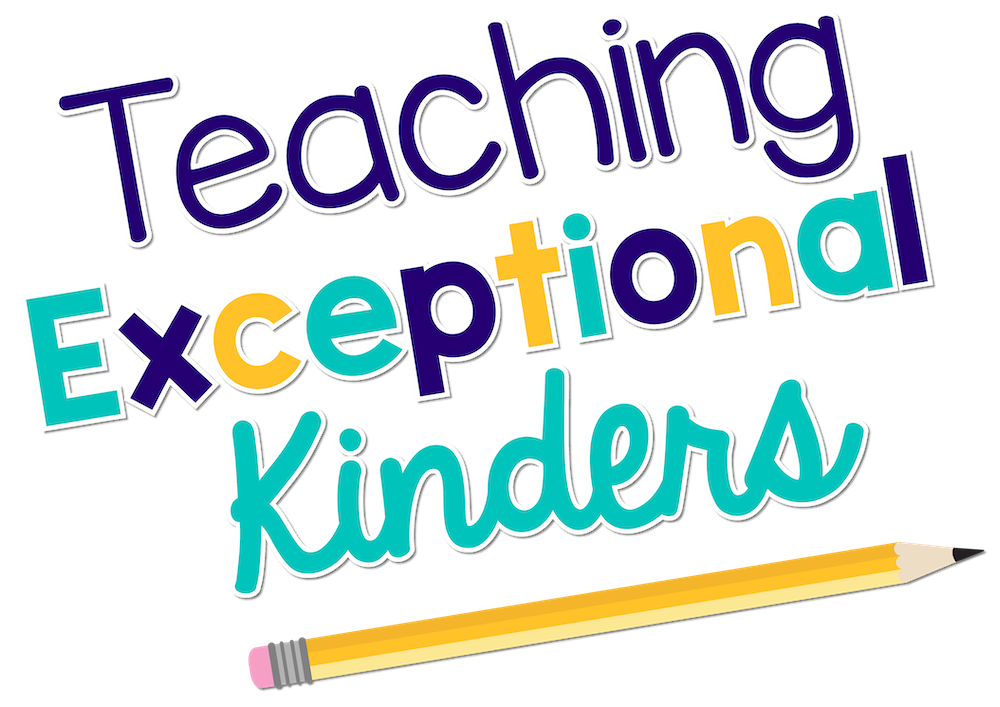7 Helpful Tips for Using Behavior Reflection Sheets
When little learners have extremely big feelings in the classroom, it can feel daunting to help them get back on track and move on with the day. One way that I like to help students process after a significant behavior is to use a behavior reflection sheet. Keep reading for some tips to help young students use this tool to process behavior choices.
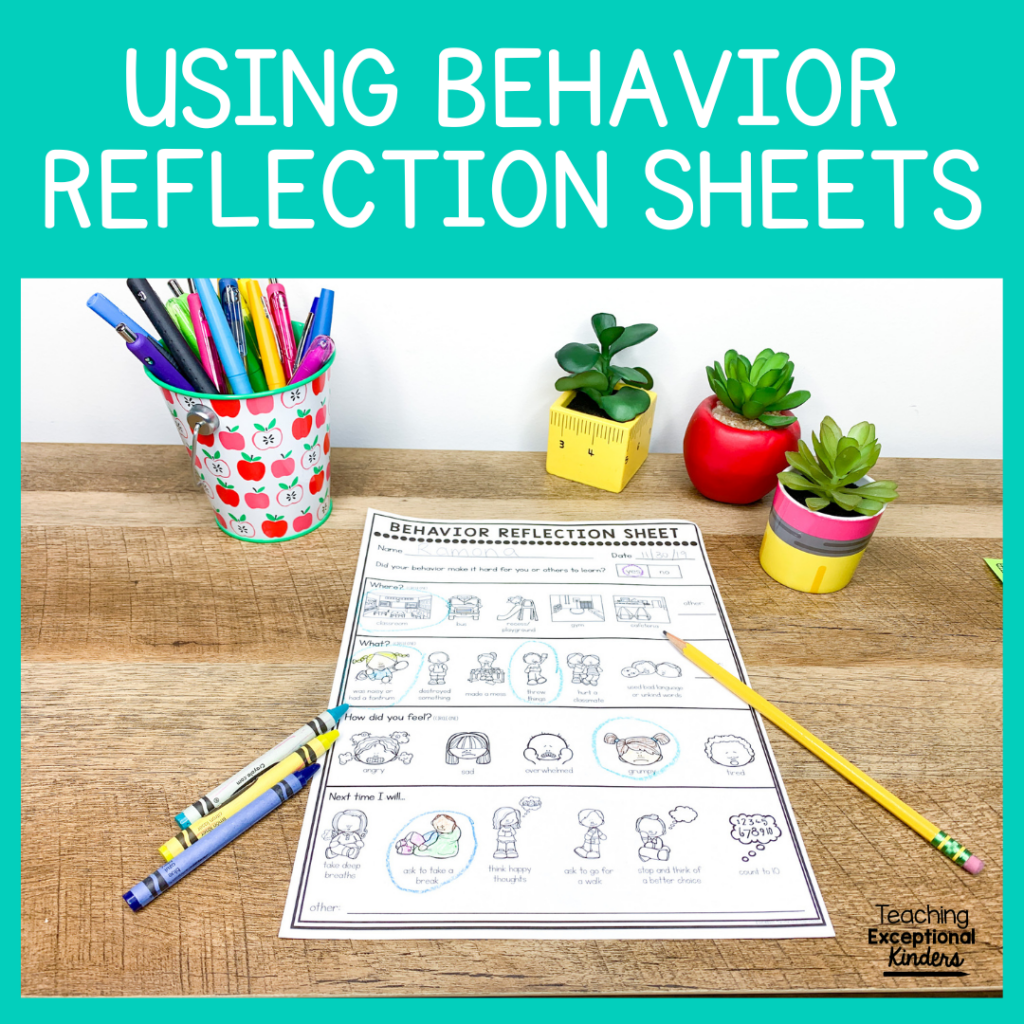
What is a Behavior Reflection Sheet?
A behavior reflection sheet is a way for students to process their emotions and choices following a significant behavior event. It can also be referred to as a “Think Sheet.” This form is designed to be completed mostly by the student, with staff support as necessary. It usually includes reflections about the location of the behavior, the behavior itself, the student's feelings, and how the student would behave differently in the future.
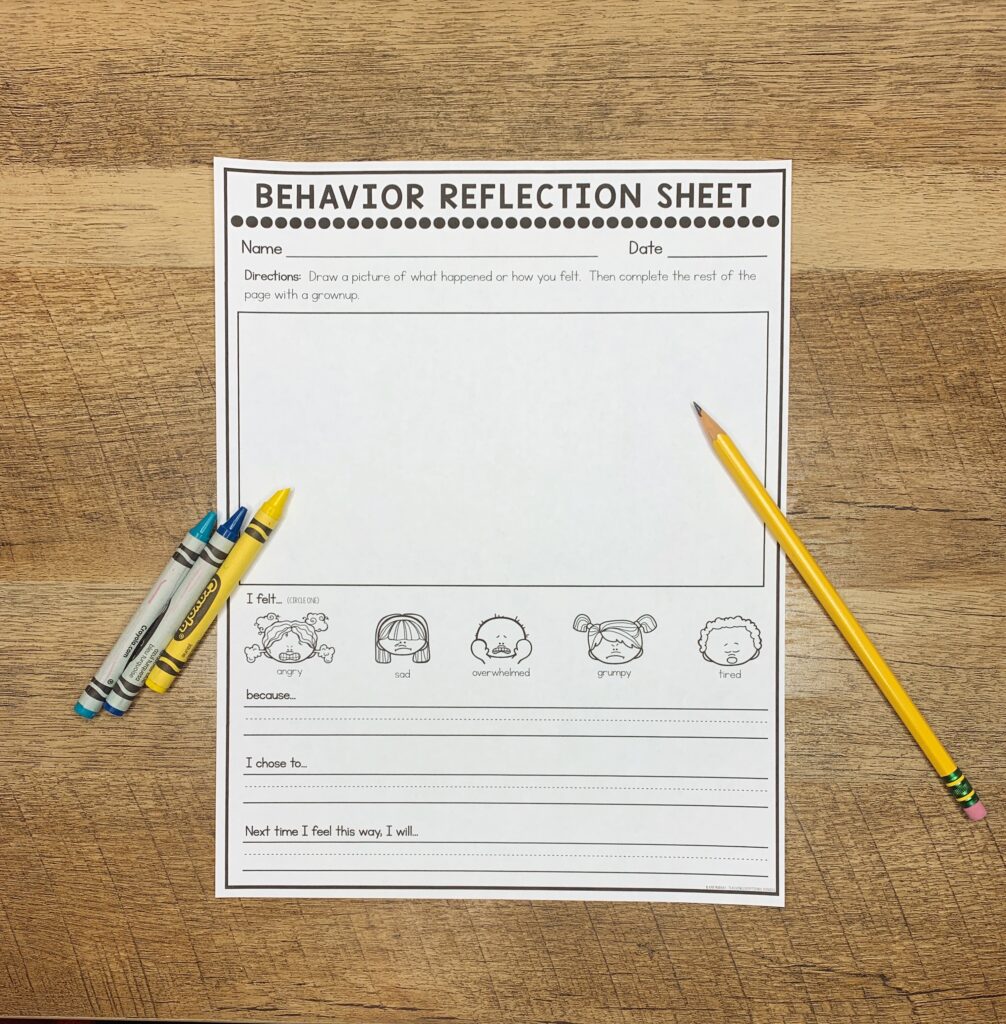
When used intentionally and appropriately, a behavior reflection sheet can be an effective classroom management tool that guides students to make appropriate behavior choices. Reflecting on behaviors of concern and making a plan for how to handle a similar situation in the future is an important step in helping students to make more positive choices and holding students accountable for their actions.
Tips for Using Behavior Reflection Sheets
A behavior reflection sheet shouldn’t be a daunting or time-consuming task for students or teachers. Instead, it should serve as a simple but helpful behavior management tool. Here are some tips that will help you make the most of the behavior reflection process.
1. De-escalation Comes First
It’s important that students are in the right frame of mind to reflect on their behavior. While we want to help them reflect while the experience is fresh in their minds, it’s not realistic to expect an escalated child to fill out a form. Every child is different when it comes to finding the right time to process behavior choices.
2. Provide Opportunities for Self-Direction
The ultimate goal of behavior reflection sheets is to teach students how to think about and, eventually, regulate their own behavior. It can be helpful to provide behavior reflection sheets in a place where students can choose to start filling them out independently. A great place would be a calm-down corner! Just be sure that students understand the purpose of the behavior reflection tool.
3. Differentiate
As with pretty much anything in an elementary classroom, there is usually a need for differentiation when it comes to behavior reflection sheets. Some students will be able to write out their responses in sentences, while other students would rather process through drawing. Other students might do best with circling on a behavior reflection sheet that only uses pictures. Consider the needs of your students when deciding on a behavior reflection tool for your class.
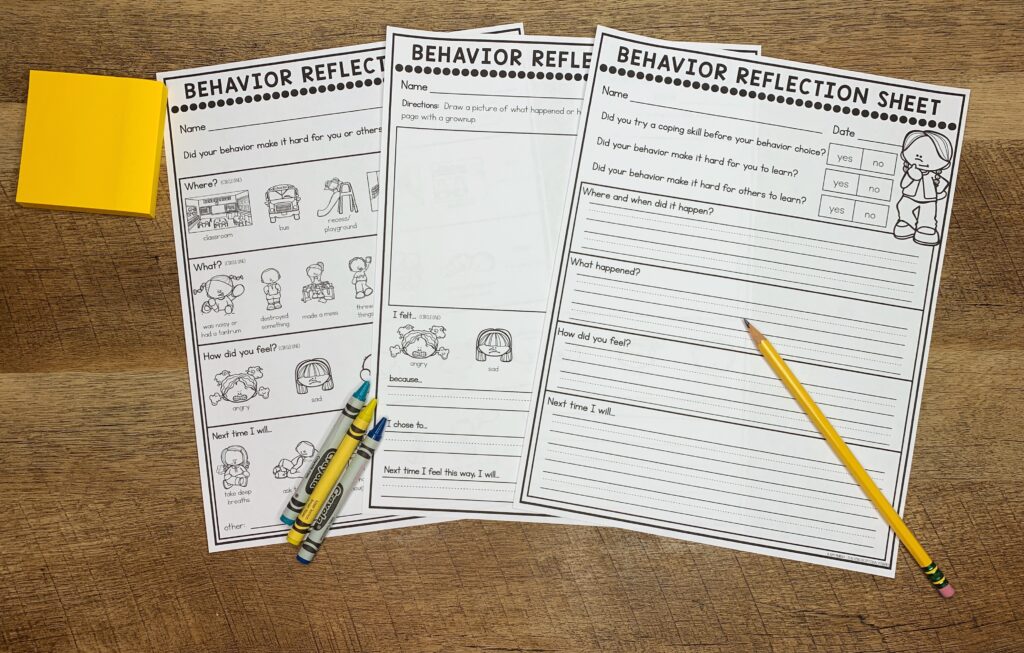
4. Treat as a Tool, Not a Punishment
Speaking of tools, be sure to treat behavior reflection sheets as a tool and not a punishment. One of the main reasons that you want to have a behavior reflection sheet that matches student ability is so that it doesn’t feel like a punishment. If it is a chore to fill out the behavior reflection sheet, the student might be more resistant to the process. Instead, a behavior reflection should be treated as an opportunity to process emotions, reset, and resolve to try again. This does not mean that students aren't held accountable for their choices; students should still receive a consequence that is appropriate for the behavior.
5. Maintain Connection
Another way that behavior reflection sheets can be treated as a punishment is when they are handed to students to complete as they sit in the hall or in the office. These forms are more effective when we take time to help students work through their emotions and reflect on their choices. This can be difficult to do in a busy classroom, but this is a small thing that can make a big difference in maintaining a connection with the child. If a student chooses to do a self-directed behavior reflection in a calm-down corner, be sure to review it with the student.
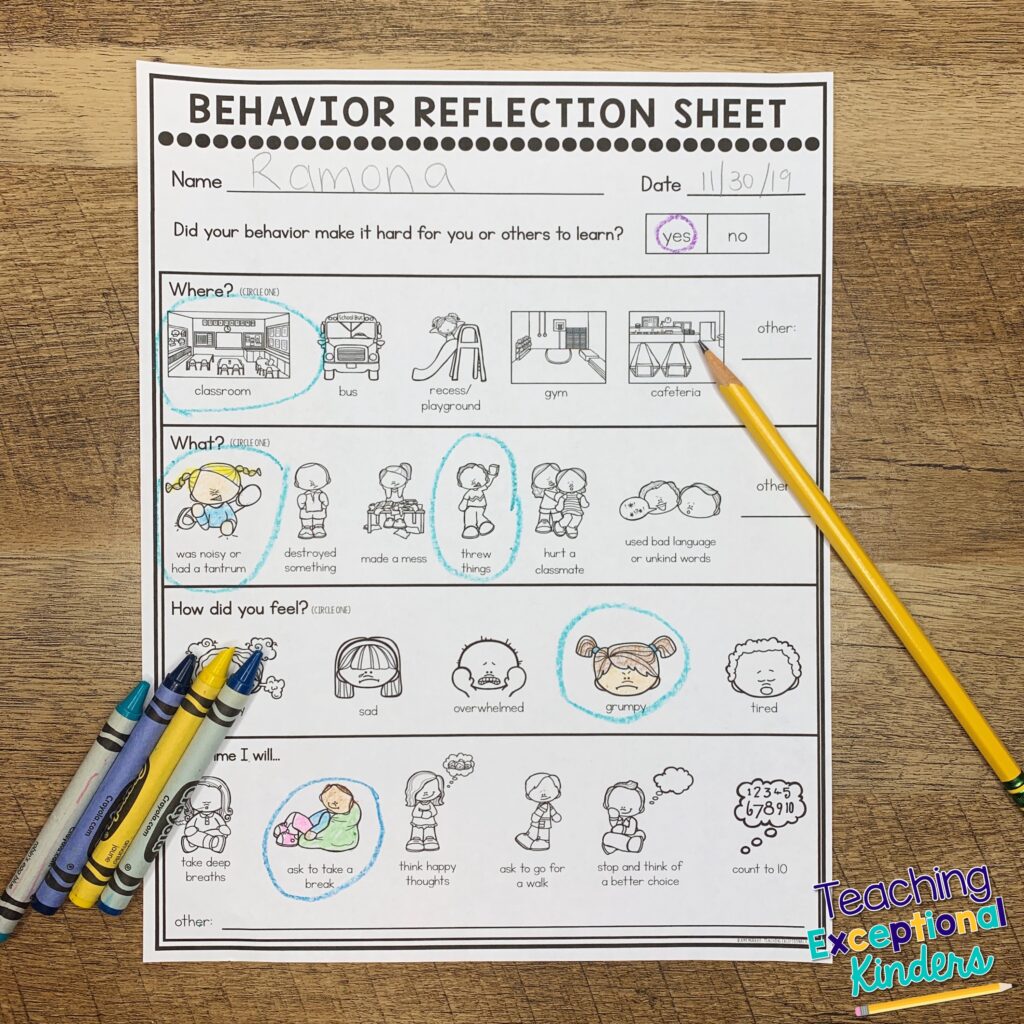
6. Focus on the Future
After talking through emotions and the behavior itself, it's important to keep the conversation focused on the next steps. What will the student do with those big feelings in the future? How can you support them in those behavior goals? What tools do they need to make that change? Students can’t go back in time and make different decisions. Instead, help them focus on changes they can make moving forward.
7. Make a Copy
Tracking behavior is an important part of understanding student behavior, so be sure to keep the reflection sheet for documentation. Are you noticing a pattern in the location of the behavior? Is there a specific emotion that the student is having difficulty processing? Holding on to behavior reflection sheets is helpful in identifying these patterns.
However, it's equally important to keep parents aware of the behaviors occurring at school. Adding a copy of the reflection sheet to the student's take-home folder will help parents see the discussion and processing that took place at school. This can help them continue the discussion and support their child at home.
More Information About Behavior Reflection Sheets
I hope these tips have inspired you to help your students reflect on their behavior. Would you like to take a closer look at the behavior reflection sheets that I have created for young students? Here is a video where I walk you through the details of this part of kindergarten classroom management.
Behavior Reflection Sheets for Students
Are you looking for printable behavior reflection sheets to use in your classroom? The sheets pictured above and shown in the video can be found in my Behavior Reflection Sheet resource. It contains three differentiated reflection pages that you can use in your classroom. Each reflection sheet has two different title options. They are also editable so that you can make wording adjustments to fit your needs.
If you’d like to take a closer look, you can find this resource in my Teaching Exceptional Kinders Shop or on Teachers Pay Teachers.
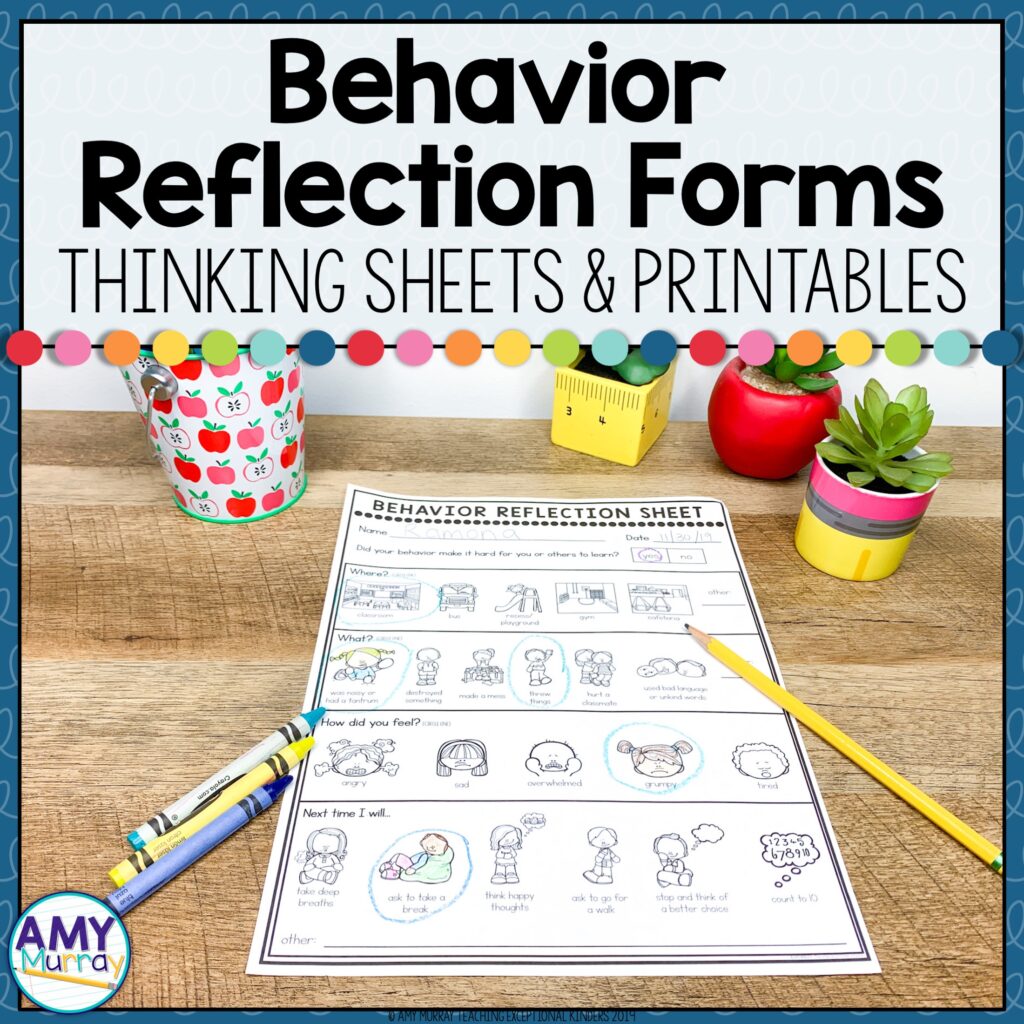
Save These Behavior Reflection Sheets
Are you short on time? Be sure to save this pin to your favorite classroom management board on Pinterest! That way you’ll be able to quickly find these behavior reflection sheets when you’re ready to download and print!
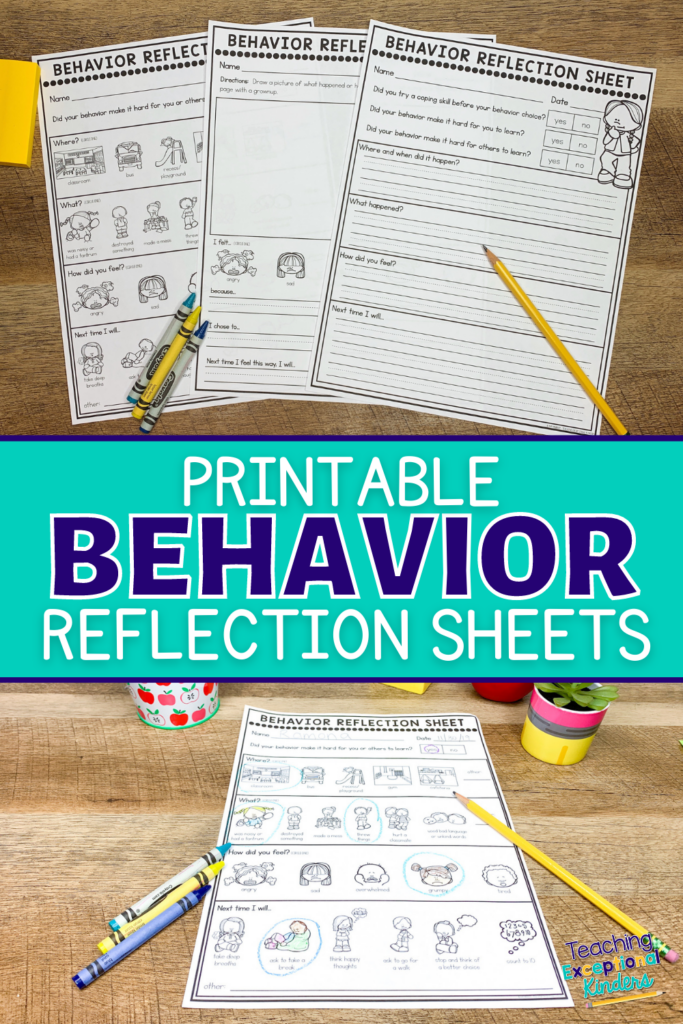
Amy
SITE DESIGN BY LAINE SUTHERLAND DESIGNS

